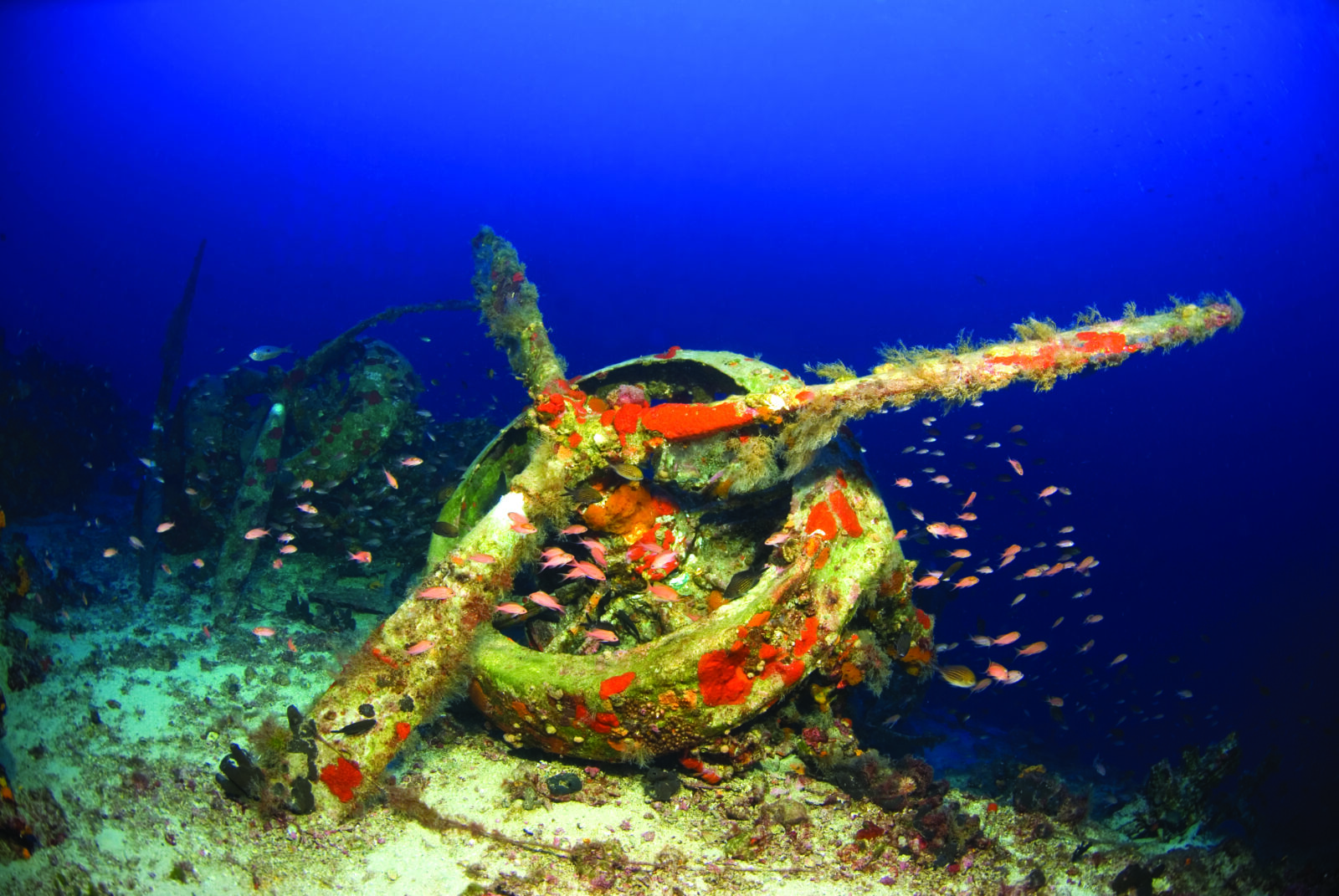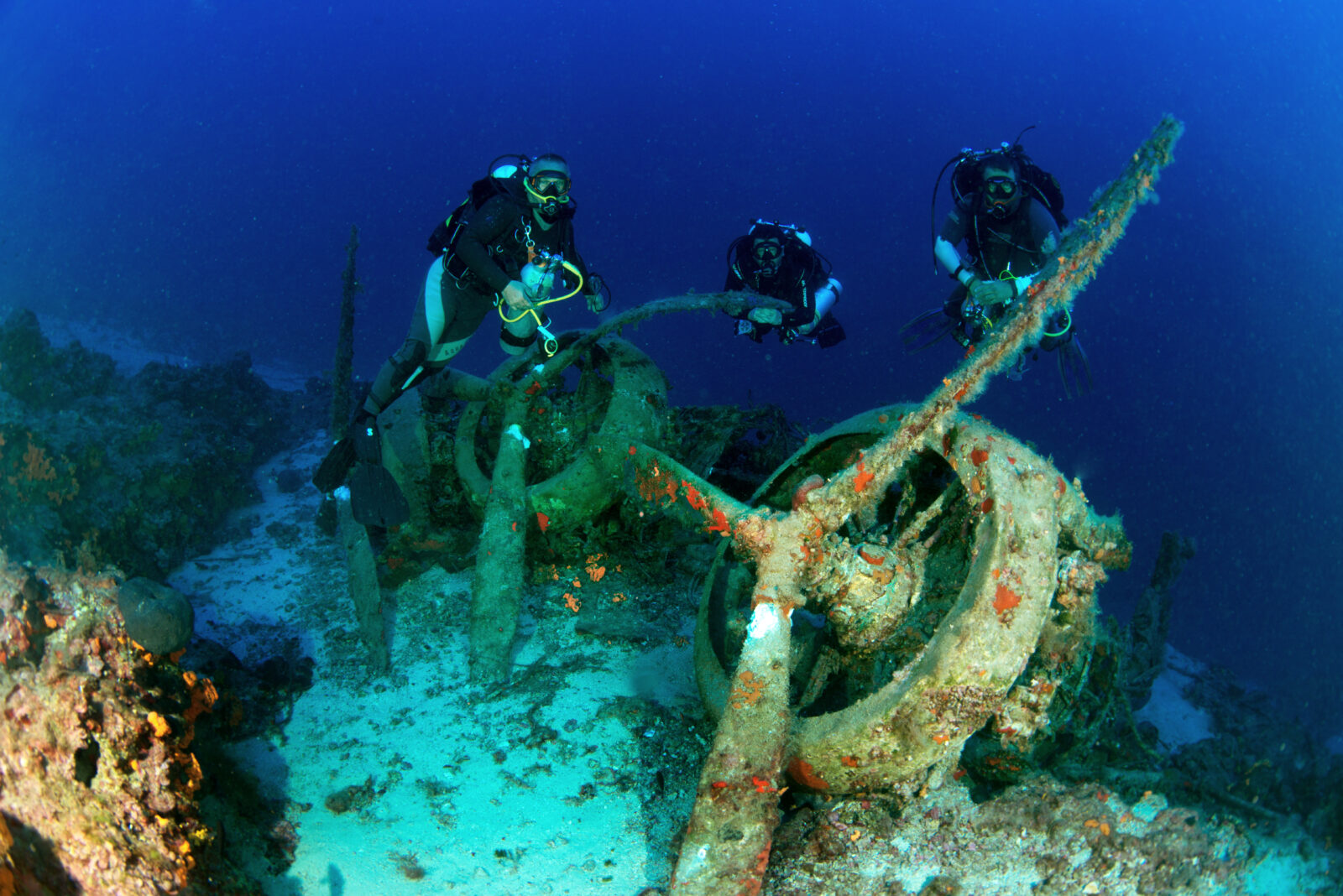
Underwater documentary filmmaker and cinematographer Tahsin Ceylan recently documented the remains of a World War II Italian bomber off the coast of Kas, Antalya.
Ceylan, along with his team, embarked on a dive at the "flying fish" dive site located between Kas and the Greek island of Kastellorizo (Meis).
They captured footage of the site, revealing the current condition of the 1935 Italian-made "Savoia-Marchetti SM. 79 Sparviero" bomber, which was shot down by British anti-aircraft fire and crashed into the sea.

Ceylan, who has previously dived at this site in 2008, 2010, and 2014, shared his findings from his latest dive, which he undertook with dive instructor Oray Ercan.
"The aircraft rests at a depth ranging from 58 to 73 meters. For our safety, we perform these dives using mixed-gas techniques rather than traditional sport diving methods. Since our last dive, the plane, a silent witness to history, has further deteriorated. The three propellers of the first engine, one propeller of the second engine, have broken off due to oxidation, and one propeller of the third engine is about to break. The fuselage and tail are no longer intact, leaving behind only a pile of metal," Ceylan explained.
Legacy of valor
He noted that the aircraft was once considered one of the most successful bombers of its time. It likely took off from its base in Rhodes and never made it back after its final mission.
Reports suggest that the pilot, who parachuted out of the aircraft, was struck by anti-aircraft fire while in the air.
His body was found by fishermen, buried in Kas, and later exhumed and repatriated by Italian authorities.

Ceylan highlighted Türkiye's rich underwater cultural heritage, particularly the prominence of World War I wrecks.
"For instance, several wrecks in Canakkale, which were off-limits to divers for 110 years, have been opened for diving thanks to the efforts of the Historical Area Presidency. However, these wrecks continue to succumb to the ravages of time," he added.
Dive instructor Oray Ercan commented on the natural degradation of the wreck, noting that the absence of human intervention has allowed the elements to take their toll on the submerged relic.